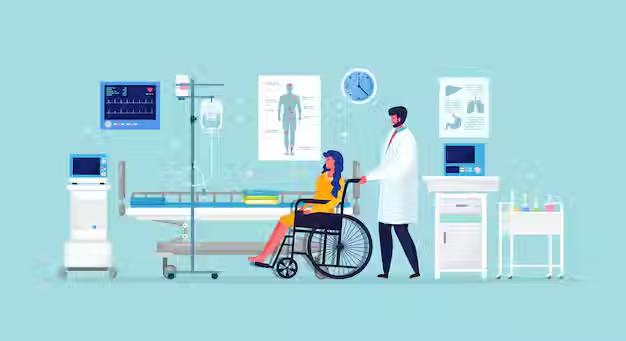No More Bottlenecks: How Smart Hospitals Are Accelerating Discharges and Patient Flow with AI
- dhewapanna0
- Aug 5
- 2 min read

Bed blockages and long wait times aren't just operational headaches—they ripple through the system, delaying care, frustrating patients, and burning out clinical teams. The challenge? Traditional discharge processes rely on siloed systems and reactive decision-making. But what if hospitals could shift from bottlenecked chaos to proactive, data-driven flow management?
A Snapshot of the Crisis:
⚠️As of 2023, over 35% of ED patients in the U.S. experienced boarding times longer than 4 hours after the decision to admit was made. The situation is worse in urban hospitals, where boarding times can exceed 10 hours, leading to ED crowding, ambulance diversion, and care delays as per the American College of Emergency Physicians (ACEP).
⚠️An analysis by the Royal College of Emergency Medicine (RCEM) revealed that roughly 1.5 million patients experienced 12+‑hour A&E waits in England during 2023, contributing to an estimated 14,000 excess deaths—a direct consequence of beds being occupied by patients ready for discharge.
How AI Is Reimagining Patient Flow:
Hospitals using AI aren’t just improving throughput—they’re transforming the patient journey from arrival to discharge. With real-time analytics and prescriptive guidance, AI ensures patients move through the system efficiently and safely.
✅ Discharge Forecasting: AI predicts when patients will be ready for discharge days in advance, giving care teams a head start on planning.
✅ Bottleneck Identification: Machine learning models flag delays in transport, pharmacy, or post-acute referrals—so teams can fix issues before they escalate.
✅ Capacity Simulation: Digital twins simulate various patient flow scenarios, helping leaders make smarter bed management decisions.
✅ Cross-Team Coordination: AI platforms improve communication between clinical, administrative, and support staff to ensure no step in the discharge process is missed.
Solutions like Trendlytics are helping hospitals move beyond static discharge checklists and manual coordination by turning raw hospital data into real-time, actionable insights. From forecasting demand to managing daily discharge priorities, AI empowers care teams to stay one step ahead, streamlining patient movement across every stage of care.
Trendlytics: Smarter Flow, Better Care
Trendlytics uses predictive and prescriptive analytics to take the guesswork out of patient flow management. Our solution forecasts discharge readiness, simulates capacity scenarios, and recommends the most efficient actions—so your teams can stay ahead of demand rather than react to it.
From real-time discharge planning to intelligent throughput optimization, Trendlytics helps hospitals eliminate avoidable delays, reduce length of stay, and improve care coordination—without overburdening staff.
👉 See how Trendlytics can help your hospital eliminate discharge delays and unlock peak performance across your patient flow.
Sources: England A&E wait times led to needless deaths of up to 14,000, data suggests | Hospitals | The Guardian, American College of Emergency Physicians (ACEP), 2023 National Report Card



